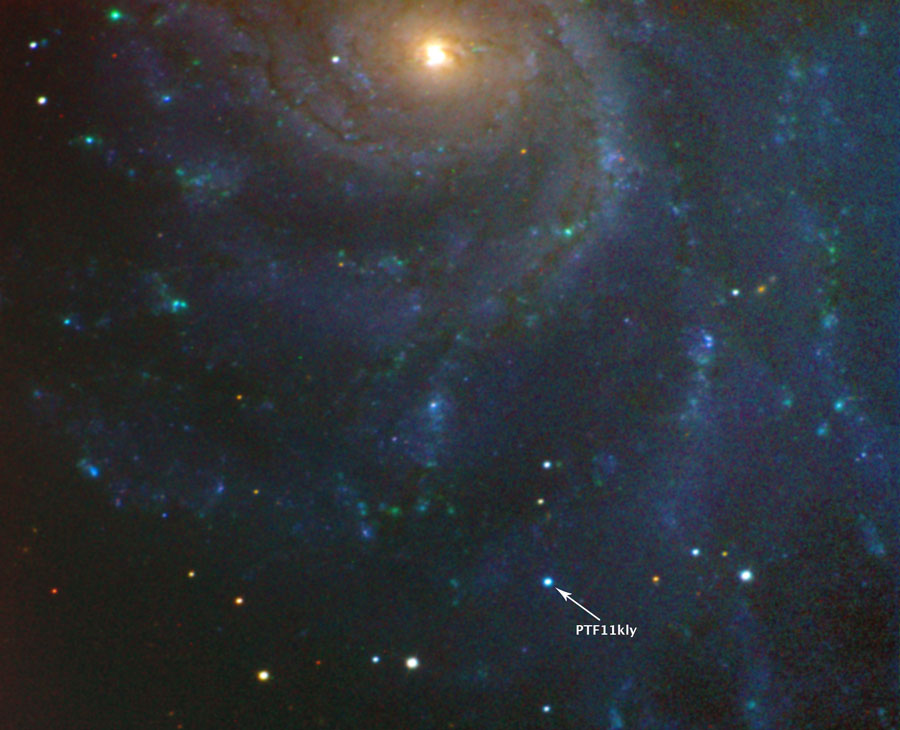The nearest supernova of its type to be discovered for 40 years is predicted to be at its brightest 7-8 September and will be visible through a good pair of binoculars.
The supernova, which was first spotted on 24 August by scientists from Oxford University and the Palomar Transient Factory (PTF) collaboration, is in the Pinwheel Galaxy, M101.
Whilst not visible to the naked eye, with a clear sky anyone can observe the supernova using a good pair of binoculars or a small telescope:
To find M101 look for the formation known as ‘The Plough’ or ‘Big Dipper’, trace from the end of the ‘handle’ of The Plough and find the second star along, Mirza, and M101 lies four degrees to the East. Observers will see a bright star at the edge of one of M101’s spiral arms.
'The best view of this exploding star is likely to be this Wednesday or Thursday. Look for it just after evening twilight near the ‘handle’ of ‘The Plough’,’ said Dr Mark Sullivan of Oxford University’s Department of Physics, who led the Oxford team. ‘Whilst it looks more or less like just another bright star, unlike its companions this supernova will soon fade away, and after a few days it will only be visible with larger telescopes.’
The discovery of the supernova is particularly important because it is a type 1a supernova – the kind used by scientists to measure the expansion of the Universe.
Dr Sullivan added: ‘For many people it could be a once in a lifetime chance to see a supernova of this kind blossom and then fade before their eyes; we may not see another one like it for another forty, or perhaps over a hundred, years!’
The Oxford University-PTF team are using the Hubble Space Telescope to observe the supernova. These observations began about five days after the explosion and will continue into mid-October, including investigating the supernova's ultraviolet properties which cannot be studied from the ground.
Provided by Oxford University

No comments:
Post a Comment